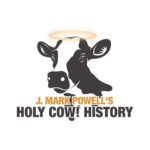It’s one of the most recognizable sounds in the world: A blasting roar that could rattle a jungle.
For film lovers, it means just one thing: a Metro-Goldwyn-Mayer movie is about to roll. And for decades, MGM meant top-quality entertainment. The very best in cinema.
The idea of using the King of the Jungle to kick off every MGM movie was the brainchild of advertising man Howard Dietz. He was inspired by the athletic teams at his alma mater, Columbia University, whose fight song said, “Go, Lions, go!”
Studio execs looked around and found a suitable animal from the Dublin Zoo named Clairbre (Irish for “charioteer”). By the time the hand-cranked camera began filming, he’d been renamed Slats. He made his debut in Goldwyn Pictures in 1916, continuing on after it teamed up with two other studios.
Slats appeared in his first true MGM opening in 1924’s otherwise forgettable “He Who Gets Slapped.” That was the silent movie era, so he didn’t roar. He didn’t have to. Just seeing a 10-foot lion staring hungrily at them was enough to make moviegoers sit up and pay attention.
Then one day Al Jolson opened his mouth and said, “You ain’t seen nothing yet!” in 1927’s “The Jazz Singer,” and everything changed. “Flickers” quickly turned into “talkies.” It wasn’t enough for the lion to be seen; he must now be heard.
The timing was good because Slats were getting long in the tooth. He could still roar, but not with great strength. MGM needed a new, younger King of the Jungle whose opening bellow would make hair stand up on the back of the audience’s necks.
And it found one in Jackie. He was a lion’s lion, actually born in Sudan. Brought to the U.S as a cub, he grew up in the Selig Zoo in Los Angeles. He strutted with swagger, radiating four-pawed star power before he even opened his mouth. And when he did, his powerful lungs left no doubt who was the king.
Yet he was also very good with people. In fact, he bonded so closely with trainer Melvin Koontz, Jackie allowed him to ride on his back.
One day in 1928, Jackie stood atop some wooden boxes, looked directly into the camera, and blasted out a ferocious roar. With that, MGM’s signature “bumper” — the trade term for the 10-second opening that appears right before a feature film — was born. Jackie was seen first in “White Shadows in the South Seas.” And he was a big hit with fans.
Unfortunately, despite everything he had going for him, Jackie had a star-crossed travel career.
In 1927, just before his MGM debut, the plane transporting him crashed in rural Arizona. Pilot and lion alike survived on milk and sandwiches until they were rescued. During a later farewell tour (which involved a string of celebrity appearances around the country), he escaped a studio explosion and two train wrecks.
MGM called all the big cats who’ve appeared in its filmed openings “Leo.” And Jackie was called “Lucky Leo” after that.
Though he survived repeated misfortune, he couldn’t survive the passage of time and the traumatic impact of all those mishaps. So Jackie was retired to the Philadelphia Zoo in 1931. He died there of a heart attack in 1935.
Jackie’s on-screen presence lived on long after he was gone. He appeared at the start of MGM’s black and white movies until 1956. For example, it’s him you see and hear bellowing at the sepia-toned start of the 1939 classic “The Wizard of Oz.”
In all, 11 different lions played “Leo” over the years. (Depending on which source you use. Some film buffs claim only seven actually appeared on celluloid; the rest were just for PR purposes.)
But there was one who captured the hearts of America’s filmgoers and whose powerful voice rang through thousands of movie houses, both big and small. The original “Lucky Leon,” the luckiest lion in Hollywood.


